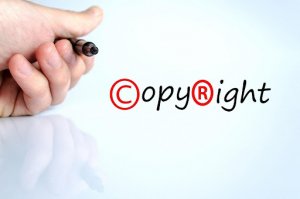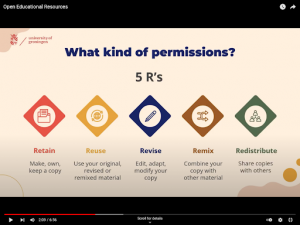Module 3: Improving intellectual property right literacy and production and reuse of OER
Landing the Concept
‘Only one thing is impossible for God: To find any sense in any copyright law on the planet.’
(Mark Twain)
Intellectual property (IP) refers broadly to the creations of the human mind. The interests of innovators and creators are protected by law and give them legal rights over their creations, enabling them to earn recognition or financial benefit from what they invent or create. Under creations are understood literary, artistic and scientific works; artistic performances, phonograms and broadcasts; inventions and scientific discoveries; industrial designs and so on.
IP rights are safeguarded by Article 27 of the Universal Declaration of Human Rights, and they are translated in national legislation and regulation on a country by country basis, subject to more than 25 international treaties on IP administered by the World Intellectual Property Organisation, WIPO, a specialized agency of the United Nations.
It is important to know that a breach of IP rights is always an illegal act and therefore it can always have legal consequences such as liability and remuneration. Also bear in mind that even though the European Union attempts to normalise the legislation and regulation concerning IPR across its member states, IPR and copyright remain a national legal competence, and some differences may exist between countries, for example with regard to exploitation of copyrighted works. See the Communia web site and especially https://copyrightexceptions.eu/ for an impression on how copyrights can differ from country to country. (If you want to acquire an in depth fundamental understanding of the IPR read the WIPO publication “Understanding Copyright and Related Rights” and especially pages 7 to 13).

In intellectual property or IP we distinguish two groups of rights: work covered by patent law and work covered by copyright law. Intellectual property in higher education (and research) refers to the results and products as outcomes from research and education work carried out by the faculty, staff, and students within the context of the institution. Over the last thirty years digitalisation, networking and globalisation have caused significant change to how IP is considered and managed: it has become much easier to create, acquire, share, reuse and change creations. This evolution has brought us global and ubiquitous services and applications such as YouTube, Netflix, Spotify, Instagram and so on, new platforms for the publishing and share of content. Unfortunately, the perception and understanding of IP Rights by the public has not kept pace with this evolution, leading to misunderstandings and increasingly incorrect use of IP. This in turn has led to innovative models of IP Rights formulation and protection, such as Creative Commons, Open Source, and new types of licenses. A few years after the initial tidal wave of the massive open online courses (MOOCs) the shift to online education, accelerated by the Covid pandemic, has caused Higher Education Institutions to reconsider not only the traditional rights on the educational materials their academic staff authors but also the rights of the students to access content. Creative Commons enables the ‘author’ to create a license enabling users to freely access and adapt the material, without charge or special permission, without taking away the copyright, but enabling the author to automatically give permission for different kinds of free use of the material without any further administrative burdens.
The changing context of IP also has had an impact on teaching and learning in HEIs. For example the increasing use of Open Educational Resources (OER), freely accessible, openly licensed text, media, and other digital assets that are useful for teaching, learning, and assessing, as well as Open Data for research purposes. The term OER describes publicly accessible materials and resources for any user to use, re-mix, improve, and redistribute under some licenses. For a basic understanding off what OER are and what they mean for Higher Education, watch this 7’ video of the University of Groningen: https://youtu.be/iRG8CsPAExg .
(Optional: if you want to get a more extensive look at OER in Higher Education watch this webinar from Open Forum: https://youtu.be/6JgoUbED4rMNote: this recording is one hour long.)

For an excellent article on a large-scale comprehensive platform for OER, read this article on Norwegian Model of State-Financed OER to Create More Inclusive Upper Secondary Schools.
Poor management of IP, knowledge ownership and dissemination can have a negative impact on research objectives and education: research outcomes may not be shared and reused; research projects may be hindered; articles may only reach a limited audience, transfer of new knowledge to education may be restricted, thus creating a vicious circle. Therefore, HEIs should take IP into account at all levels and in all its activities, and it may be necessary to provide IP training at an executive level, furthermore, teaching of IP should be better integrated into the curricula of higher education institutes and taught from a business (rather than a purely legal) perspective.
Take Action!
Find the IPR Policy in your Higher Education Institution, make sure that you have the most up to date version. You may have to consult the legal or the IT department, the library or information services, if you are lucky you will find it easily on your intranet or even better on the public web site of your institution. The difficulty you incur to find an up to date IPR Policy in your institution may be an indicator of the importance of and awareness for this important issue.
Go to the WIPO web page https://www.wipo.int/technology-transfer/en/database-ip-policies-universities-research-institutions.html and evaluate the IPR Policy in your Higher Education Institution with the recommendations of the WIPO, compare your policy with policies that you find in the WIPO database or with those that you can find in other institutions. Take into account the differences that may exist between different national regulatory systems. Designing a IPR Policy should involve all stakeholders of your institution: content creators (such as researchers and educators, course designers, media experts etc.), content consumers (students, the public at large, the industry etc.) but also the management and governance. IPR has an important financial impact: consider the cost of acquisition of content and rights on content, think also on revenues (patents) or savings (FOSS and OER). Be aware of the legal aspects: please consult the legal department of your institution or seek legal advice in case of doubt, especially if you intend to adopt the policy in your institution.
You can compare the policy that you have drafted with the WIPO and HEI Community here: https://www3.wipo.int/contact/en/area.jsp?area=universities
This document Sample_copyright-policy.pdf from the University of Surrey (UK) can inspire you in your design. (https://www.surrey.ac.uk/sites/default/files/2020-12/copyright-policy.pdf)
Try to answer the following questions:
Does your institution have an IP Policy? Do a small informal survey with students, post-graduates, academic and administrative or technical staff from your institution and find out what their knowledge is about your institution’s IP policy. Possible questions can be: who owns copyright in scholarly publications, theses, teaching materials, assessments? Are your interviewees familiar with the copyright guidance on the use of Third Party copyright materials of your institution? Are your interviewees aware of the OER policy (if any) at your institution? Is there an Open Data policy? Does your institution provide support and training for IPR to teaching and support staff? To researchers? To students? Take a look at https://www.jisc.ac.uk/guides/open-educational-resources or https://opengame-project.eu/results/ for some inspiring guidelines and materials.
Covid has accelerated the digital transition, but has your IP policy followed suit? Can you easily find who owns the content of a recorded lecture? Is it clear how long recordings can be kept and viewed? What are the protocols for when teaching staff leave regarding their recorded lectures? What about the rights on one’s own image, especially for students? How does the increasing digitalisation of courses impact on the IPR of the content? Discuss with your AV and media department and with your legal/IP department if your IP policy still holds. Read https://link.springer.com/article/10.1007/s40319-021-01041-1 for a broad perspective on the matters raised by the Covid-19 pandemic.
Write and share a blog post with your observations and conclusions.
Test Yourself
References
- For a fundamental understanding of Intellectual Property Rights and their importance for development, economy, research and education read: “Understanding Copyright and Related Rights” https://www.wipo.int/edocs/pubdocs/en/wipo_pub_909_2016.pdf
- In this recorded lecture Keith Winstein of MIT explains the importance of the legal aspects of the copyright law.
Keith Winstein. 6.912 Introduction to Copyright Law. January IAP 2006. Massachusetts Institute of Technology: MIT OpenCourseWare, https://ocw.mit.edu . License: Creative Commons BY-NC-SA. Introduction to copyright law and American law in general, Keith Winstein: https://ocw.mit.edu/courses/electrical-engineering-and-computer-science/6-912-introduction-to-copyright-law-january-iap-2006/video-lectures/lecture-1-introduction/ - OECD describes in “Patents and Innovation: Trends and Policy Challenges” the relationship between the protection of creative work and growth and development: https://www.oecd.org/science/inno/24508541.pdf
- Technopolis warns for the risks of stalling innovation due to the ignorance of the limitations and opportunities of IPR: https://www.technopolis-group.com/why-ip-standards-and-regulation-should-matter-more-in-innovation-policy/
- This presentation provides a different take on IPR for HEIs in times of Covid: https://youtu.be/GMERIFHrMk8 Negotiating the Production, Management and Ownership of Knowledge - Dr. Kylie Pappalardo QUT
- Also this paper examines the tensions caused by IPR in times of crisis: the access barriers, the tools used to reduce them and their effectiveness. https://link.springer.com/article/10.1007/s40319-021-01041-1
- The Intellectual Property in Education Network promotes creativity, innovation, entrepreneurship and responsible digital engagement among young Europeans. https://euipo.europa.eu/ohimportal/en/web/observatory/ip-in-education
- This is an interesting chapter in Tony Bates essential book on “Teaching in a Digital Age” and it gives a view on how production, use and reuse of teaching and learning resources may change in the future, a future that started the day before yesterday: https://opentextbc.ca/teachinginadigitalage/part/10-trends-in-open-education/
- COMMUNIA advocates for policies that expand the public domain and increase access to and reuse of culture and knowledge. https://www.communia-association.org/c4ed/ Look also at https://copyrightexceptions.eu/ , a collaborative effort to map user rights in the European Union's copyright framework.
- https://copyrightexceptions.eu/
